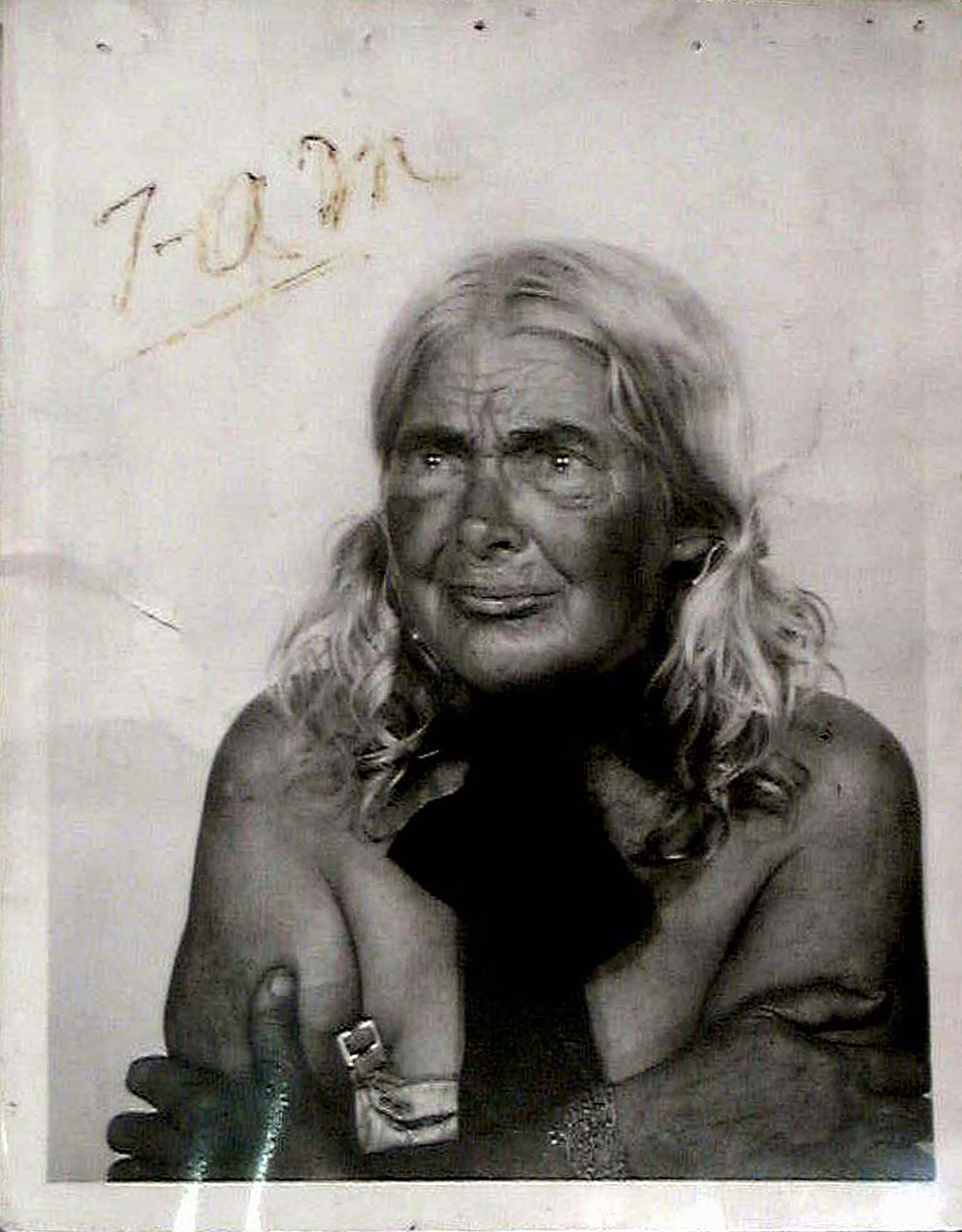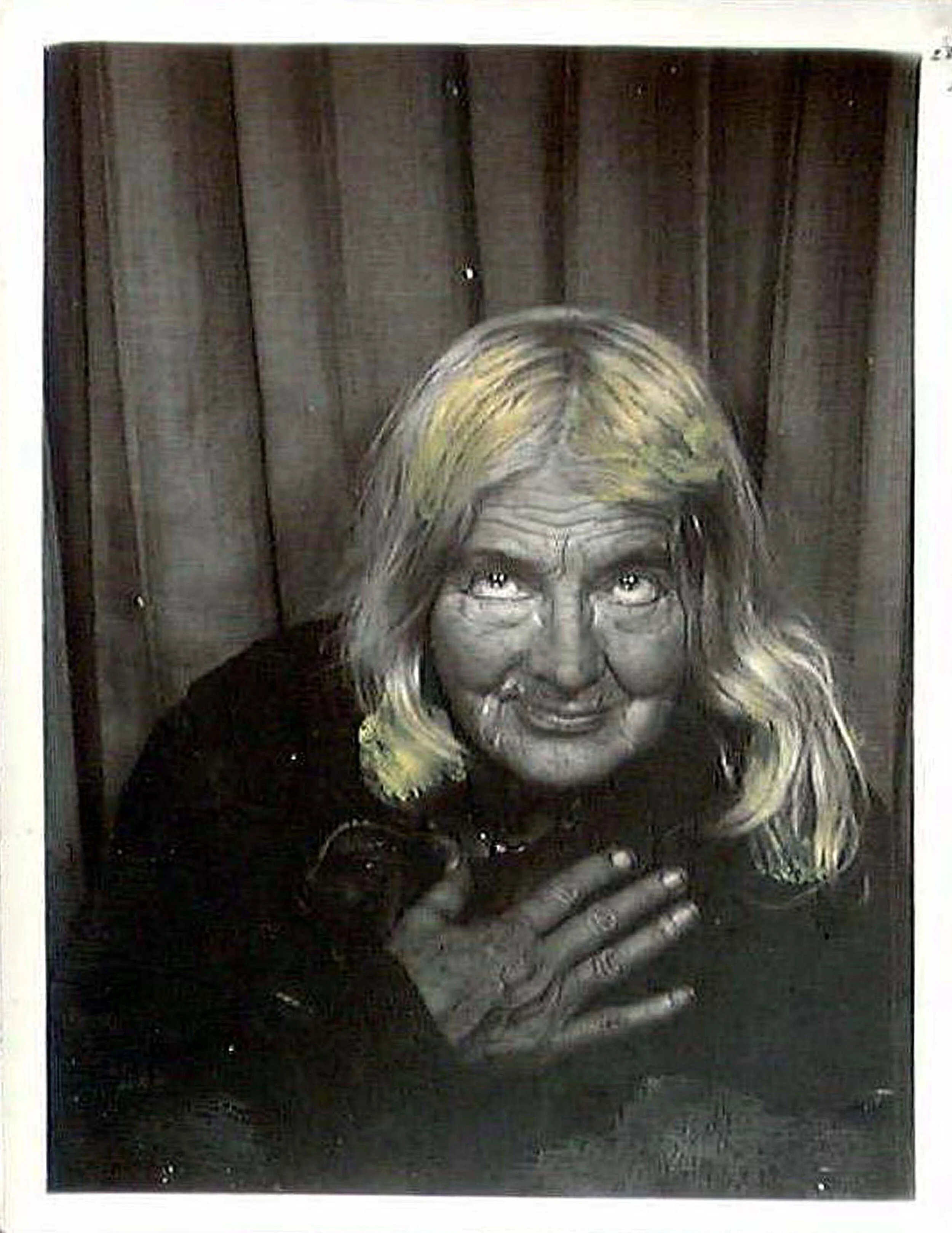Chicago’s Most Collected Artist is Largely Unknown
Courtesy of Carl Hammer Gallery
By Kala Herh
Enter into the life of Lee Godie. It is the 1970s, years before Cindy Sherman and the arrival of her extravagant self-portraits fled the contemporary art scene. Godie was a homeless woman hovering around inner-city Chicago, snapping black and white photos in the corner of a Greyhound bus station and living off her "muriel" case full portraits. Through the use of elaborate props, makeup, and costumes, Lee created a world filled with nothing short of beauty and glamor.
Courtesy of Carl Hammer Gallery
Lee's work illustrated distinct iterations of her identity: a French-speaking socialite, complete with silver hair pinned back; an astute businesswoman, clad in a dark suit and hands full of dollar bills; a muralist wearing a fur-lined coat and drawing paper in hand. This is who Godie understands herself to be, which makes one image in particular stands out in the series. It is an image of Godie bare-chested and in near tears that reveals a sense of vulnerability to this usually vivacious artist.
Godie's images also display some of the earliest forms of retouching -- she altered the 5x7 prints with a red ballpoint pen. The products of such free-flowing spontaneity are seen in Oh Frenchy! Frenchy! and Muralist where Godie enhances her eyelashes, adds red lips and tints her cheeks to highlight her feminine features. Here, Godie embodies femininity in all its multiplicity; gender as a performance.
Courtesy of Carl Hammer Gallery
No one knows how Godie ended up on the streets, or why she stayed for that matter. What is known is that Godie was not poor and instead, "quite the businesswoman," says Yolanda Farias, the manager of the gallery that houses Godie's works. The artist, wearing her patchwork fur coat and round cap, frequently occupied the steps of the Chicago Art Institute selling the paintings that she deemed to be better than Cezanne's. And people (who she liked) bought them too. "There was some kind of great beauty about her. She was disheveled, often dirty, and wearing rags—but she wore them incredibly beautifully," said an old friend, Michael Thompson, who met Godie on those very steps. Godie had a strange selling system, one that needed both parties' affection. If she liked the look of the buyer, would she uncurl the canvas, urging them to buy. However, if she got the wrong first impression, she would roll up the canvas and look the other way. Her work had this undeniable intensity that she felt compelled to respect this high regard from her buyers. Over the two decades that Lee lived on the street, she made thousands of paintings and racked up the attention of major collectors of the time. In turn, Godie became, in part, a type of legend in the Chicago art scene.
Courtesy of Carl Hammer Gallery
But, the precarious nature of the streets took a brutal toll on her mind and body. A toll that would later result in early-onset dementia. However, the sanctuary of the photo booth offered a rare refuge and moment of reflection. Perhaps, these moments of creation under the roof of the bus station were as much an introspection into Godie's life, as an act of self-discovery.
Courtesy of Carl Hammer Gallery
Courtesy of Carl Hammer Gallery













